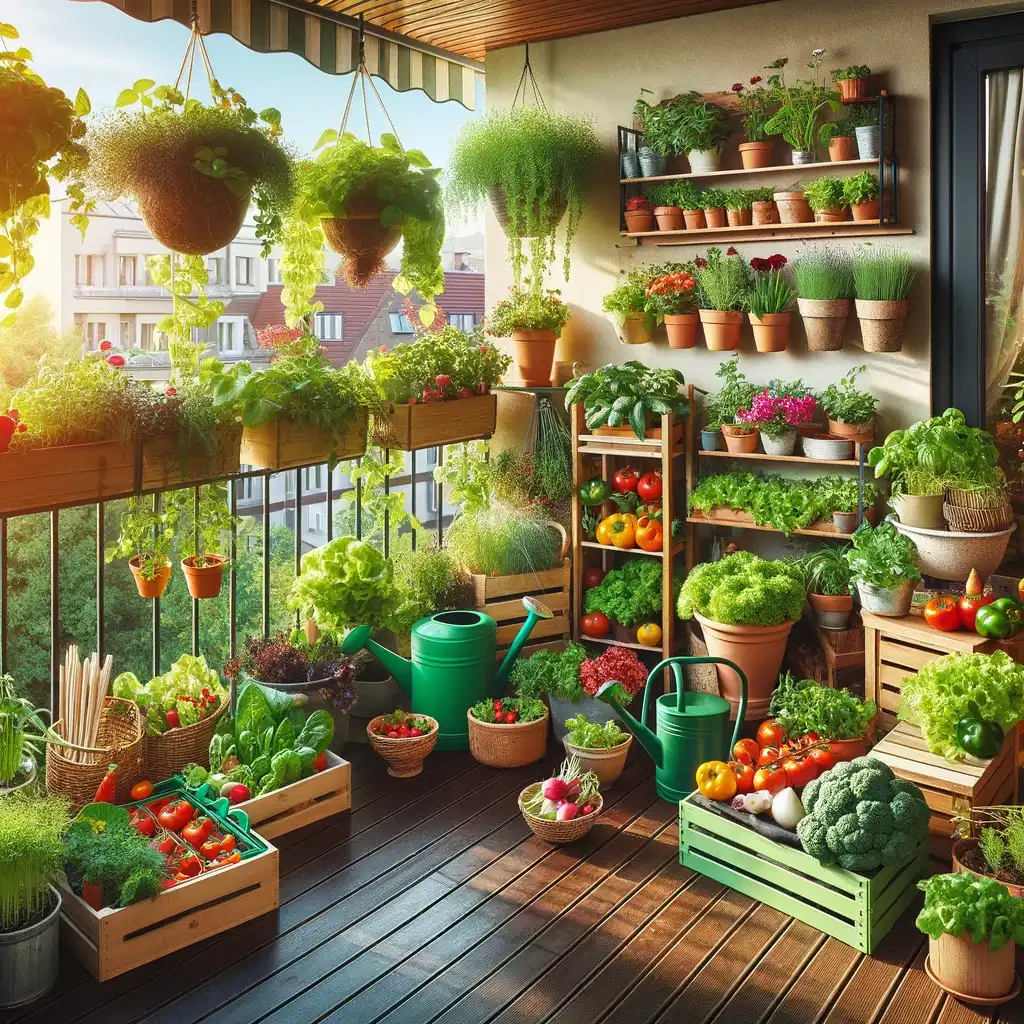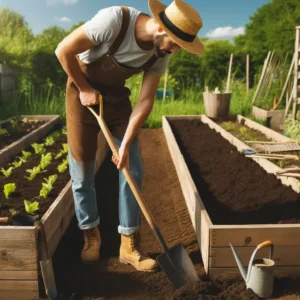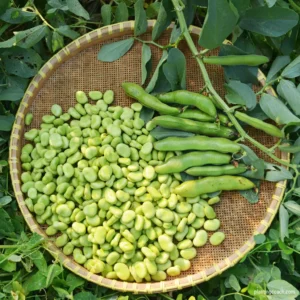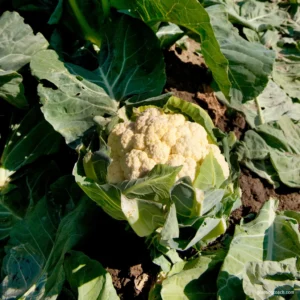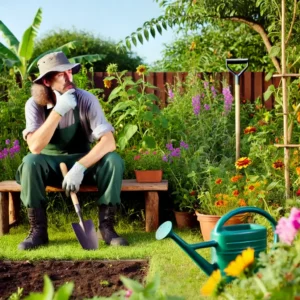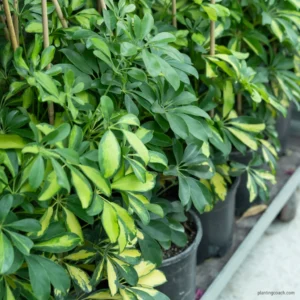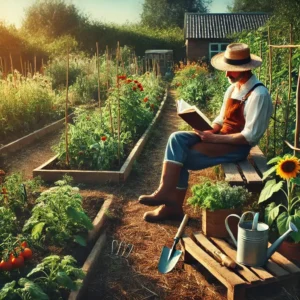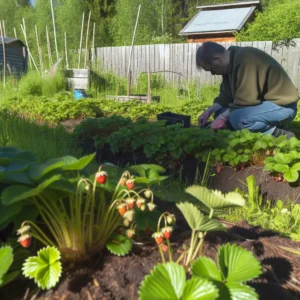Growing vegetables on balcony can be a rewarding experience. Whether you live in an apartment or have limited outdoor space, balcony gardening offers a way to enjoy fresh, homegrown produce. In this guide, we will explore various aspects of balcony gardening to help you create a thriving vegetable garden in a small space.
8 Tips for Growing Vegetables on Balcony
1. Choosing the Right Vegetables
When it comes to balcony gardening, choosing the right vegetables is crucial. The limited space and specific conditions of a balcony mean that not all vegetables will thrive. To start, assess the size and conditions of your balcony. Consider factors such as sunlight exposure, wind, and available space for containers. These elements will influence your vegetable choices.
Some of the best vegetables for balconies are those that are compact, have shallow root systems, and can grow well in containers. Tomatoes, lettuce, radishes, peppers, and herbs like basil and parsley are excellent choices. These plants do not require extensive space or deep soil, making them ideal for container gardening.
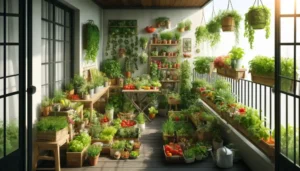
Seasonal considerations are also important. Different vegetables thrive in different seasons. For example, leafy greens like lettuce and spinach prefer cooler temperatures and can be grown in spring and fall. On the other hand, heat-loving plants like tomatoes and peppers are best planted in the summer. By choosing vegetables based on the growing season, you can ensure that your plants receive the optimal conditions for growth.
2. Container Selection and Preparation
Selecting and preparing the right containers is a fundamental step in balcony gardening. Containers come in various shapes, sizes, and materials, and each type has its advantages and disadvantages. Common options include plastic pots, ceramic planters, and fabric grow bags. When choosing containers, consider their size, drainage capability, and material.
Plastic pots are lightweight, affordable, and retain moisture well, making them a popular choice. However, they can become brittle over time when exposed to sunlight. Ceramic planters are more durable and visually appealing, but they can be heavy and may crack in freezing temperatures. Fabric grow bags offer excellent drainage and root aeration, promoting healthy plant growth. They are also lightweight and easy to store when not in use.
Proper soil selection is another critical aspect. Use a high-quality potting mix designed for container gardening. Unlike garden soil, potting mix is lighter and formulated to retain moisture while providing adequate drainage. Adding organic matter like compost can enhance soil fertility and improve plant health.
Drainage is essential to prevent waterlogged soil, which can lead to root rot. Ensure your containers have drainage holes at the bottom. You can also place a layer of gravel or small stones at the bottom of the container to improve drainage. Elevating the containers slightly using pot feet or bricks can further enhance drainage and prevent water from pooling at the base.
3. Planting and Transplanting
Planting and transplanting are crucial steps in establishing your balcony garden. Deciding whether to start from seeds or seedlings depends on your preferences and the specific vegetables you are growing. Starting from seeds is cost-effective and allows you to choose from a wide variety of plants. However, it requires more time and effort, as seeds need to be germinated and grown into healthy seedlings before transplanting.
Seedlings, on the other hand, offer a head start. They are young plants that have already been germinated and grown to a certain stage. Purchasing seedlings from a nursery can save time and increase the chances of success, especially for beginner gardeners. Regardless of your choice, it is essential to handle young plants with care during the transplanting process.
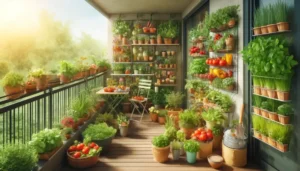
When transplanting, ensure the seedlings are well-watered before removing them from their original containers. Gently loosen the root ball to encourage root growth in the new container. Dig a hole in the potting mix that is deep enough to accommodate the roots without crowding them. Place the seedling in the hole, backfill with soil, and gently press down to eliminate air pockets. Water the transplanted seedling thoroughly to help it settle into its new home.
Proper spacing and depth are vital for healthy plant growth. Follow the recommended spacing guidelines for each vegetable to prevent overcrowding. Overcrowded plants compete for nutrients, water, and sunlight, leading to stunted growth and poor yields. Additionally, plant seedlings at the correct depth to ensure they establish strong root systems.
4. Watering and Fertilizing
Watering and fertilizing are essential practices for maintaining a healthy balcony garden. The unique environment of a balcony, with its exposure to wind and varying sunlight, can affect the water needs of your plants. Understanding how often and how much to water is key to ensuring your vegetables thrive.
The frequency of watering depends on factors such as the type of vegetable, container size, and weather conditions. Generally, container gardens require more frequent watering than in-ground gardens because they dry out faster. During hot, sunny weather, you may need to water your plants daily, while in cooler, cloudy conditions, watering every few days may suffice. Check the moisture level of the soil regularly by inserting your finger about an inch deep. If the soil feels dry, it’s time to water.
Using an irrigation system can simplify watering and ensure your plants receive consistent moisture. Drip irrigation systems deliver water directly to the root zone, reducing water waste and minimizing the risk of overwatering. Self-watering containers are another excellent option, as they have a built-in reservoir that provides a steady supply of water to the plants.
Fertilizing is equally important to provide your plants with the nutrients they need for healthy growth. Container gardens often require more frequent fertilization than traditional gardens because nutrients can leach out of the soil with regular watering. Use a balanced, water-soluble fertilizer every two to four weeks, following the package instructions for application rates. Organic options like compost tea or fish emulsion are also effective and environmentally friendly.
5. Maximizing Sunlight and Managing Shade
Sunlight is a critical factor in the success of your balcony garden. Most vegetables require at least 6-8 hours of direct sunlight per day to grow and produce bountiful harvests. However, not all balconies receive ample sunlight throughout the day, and managing light exposure can be a challenge.
To maximize sunlight, arrange your plants strategically. Place sun-loving vegetables, such as tomatoes, peppers, and cucumbers, in the sunniest spots on your balcony. Leafy greens like lettuce and spinach can tolerate some shade and should be positioned in areas with less direct sunlight. Use reflective surfaces like white walls or light-colored planters to bounce additional light onto your plants.
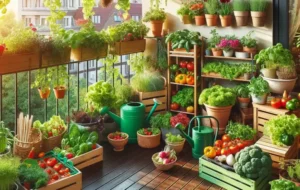
If your balcony has limited sunlight, consider growing shade-tolerant vegetables. Crops such as lettuce, kale, and herbs like mint and parsley can thrive with fewer hours of direct sunlight. Additionally, you can use grow lights to supplement natural light, especially in shaded or north-facing balconies. LED grow lights are energy-efficient and can provide the full spectrum of light needed for plant growth.
Managing shade is equally important. Tall buildings or nearby structures can cast shadows on your balcony, reducing the amount of direct sunlight. Use vertical gardening techniques, such as trellises, shelves, or hanging planters, to elevate your plants and increase their exposure to light. Pruning and thinning your plants can also help improve light penetration and air circulation, promoting healthier growth.
6. Dealing with Pests and Diseases
Pests and diseases can pose significant challenges to balcony gardeners. The confined space and close proximity of plants can create an environment where pests and diseases spread quickly. Identifying and managing these issues promptly is essential to maintaining a healthy garden.
Common balcony garden pests include aphids, spider mites, whiteflies, and caterpillars. Regularly inspect your plants for signs of infestation, such as discolored leaves, sticky residue, or visible insects. Early detection allows you to address the problem before it becomes severe. Use organic pest control methods, such as neem oil, insecticidal soap, or diatomaceous earth, to manage pests without harming beneficial insects or the environment.
Encouraging beneficial insects, such as ladybugs and lacewings, can also help control pest populations. These insects prey on common garden pests and can be attracted to your balcony by planting flowers like marigolds or dill. Additionally, practicing crop rotation and interplanting different types of vegetables can reduce the risk of pest infestations.
Disease prevention is equally important. Overwatering, poor air circulation, and contaminated soil can lead to fungal diseases like powdery mildew or root rot. Ensure your containers have adequate drainage and avoid overcrowding your plants. Watering at the base of the plants rather than overhead can reduce the risk of fungal infections. If you notice diseased plants, remove and dispose of them immediately to prevent the spread of disease.
7. Harvesting and Maintenance
Regular harvesting and maintenance are essential to keep your balcony garden productive and healthy. Knowing when to harvest your vegetables ensures you enjoy them at their peak flavor and nutritional value. Each vegetable has specific indicators for readiness. For example, tomatoes should be harvested when they are fully colored and slightly firm, while lettuce can be picked when the leaves are tender and crisp.
Harvesting regularly encourages plants to produce more. For vegetables like beans, cucumbers, and zucchini, picking them frequently can stimulate continuous production. Use clean, sharp scissors or pruning shears to harvest your vegetables to avoid damaging the plants.
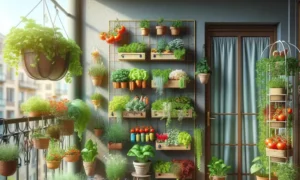
Trimming and maintenance are also crucial for a thriving garden. Remove dead or yellowing leaves to promote air circulation and prevent disease. Trimming can help shape the plants and control their size, especially for vining vegetables like tomatoes and cucumbers. Strike out the weeds (the small shoots that grow between the main stem and branches) to direct the plant’s energy towards fruit production.
Seasonal transitions require special attention. As the growing season changes, some plants may need to be replaced or moved. For example, in the fall, you can switch from summer crops like tomatoes to cool-season vegetables like kale and spinach. Prepare your garden for different seasons by cleaning and storing containers, adding fresh soil or compost, and protecting plants from frost with covers or by bringing them indoors.
8. Creative Space-Saving Techniques
Maximizing the limited space on a balcony requires creative techniques. Vertical gardening is an excellent way to make the most of your space. Using trellises, shelves, and hanging planters allows you to grow more plants without taking up valuable floor space. Plants like beans, peas, and cucumbers can climb trellises, while strawberries and herbs can grow in hanging baskets.
Companion planting is another effective strategy. This involves growing different plants together that benefit each other. For example, planting basil next to tomatoes can improve tomato flavour and repel pests. Lettuce can be grown under taller plants like peppers to maximize space and reduce weeds.
Incorporating multi-purpose furniture can also help. Consider using benches with built-in planters or vertical garden walls that double as privacy screens. These items serve multiple functions while providing additional growing space. Additionally, using foldable or stackable containers allows you to adjust your garden layout as needed.
Summary
Growing vegetables on a balcony is a fulfilling way to enjoy fresh produce, even in limited spaces. With the right approach, anyone can turn their balcony into a productive garden. By choosing the right vegetables, preparing the containers properly, and following good gardening practices, you can enjoy a fruitful harvest.
FAQ
Q1: What are the easiest vegetables to grow on a balcony?
Some of the easiest vegetables to grow on a balcony include tomatoes, lettuce, radishes, and herbs like basil and parsley. These plants are well-suited to container gardening and thrive in smaller spaces.
Q2: How much sunlight do balcony vegetables need?
Most vegetables require at least 6-8 hours of sunlight per day. If your balcony has less sunlight, choose shade-tolerant vegetables like leafy greens, which can thrive with fewer hours of direct sunlight.
Q3: Can I use regular garden soil for container gardening?
It’s better to use a high-quality potting mix designed for containers, as regular garden soil can be too heavy and may not drain well. Potting mix provides the right balance of moisture retention and drainage for container plants.
Q4: How do I prevent pests in my balcony garden?
Regularly inspect your plants for signs of pests and use organic pest control methods like neem oil or insecticidal soap. Encouraging beneficial insects like ladybugs can also help control pest populations naturally.
Q5: What do I do with my balcony garden during the winter?
Depending on your climate, you can bring containers indoors, grow cold-tolerant vegetables, or prepare your garden for the next growing season by cleaning and storing your containers properly. Using frost covers can also protect plants from cold weather.
